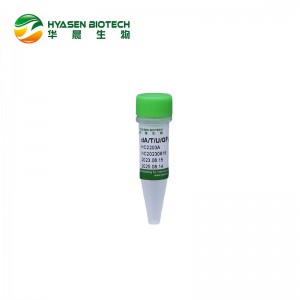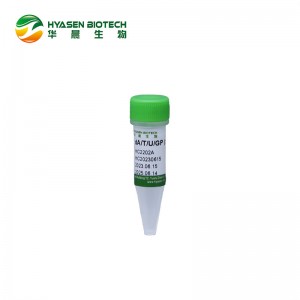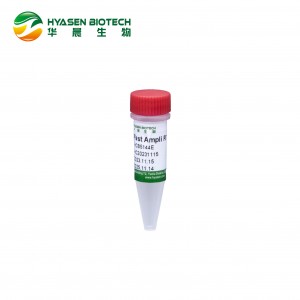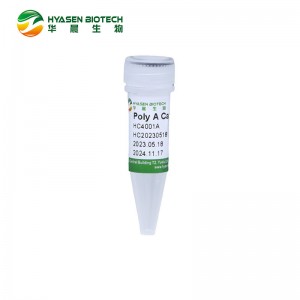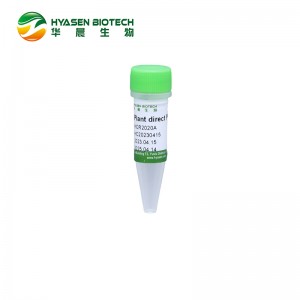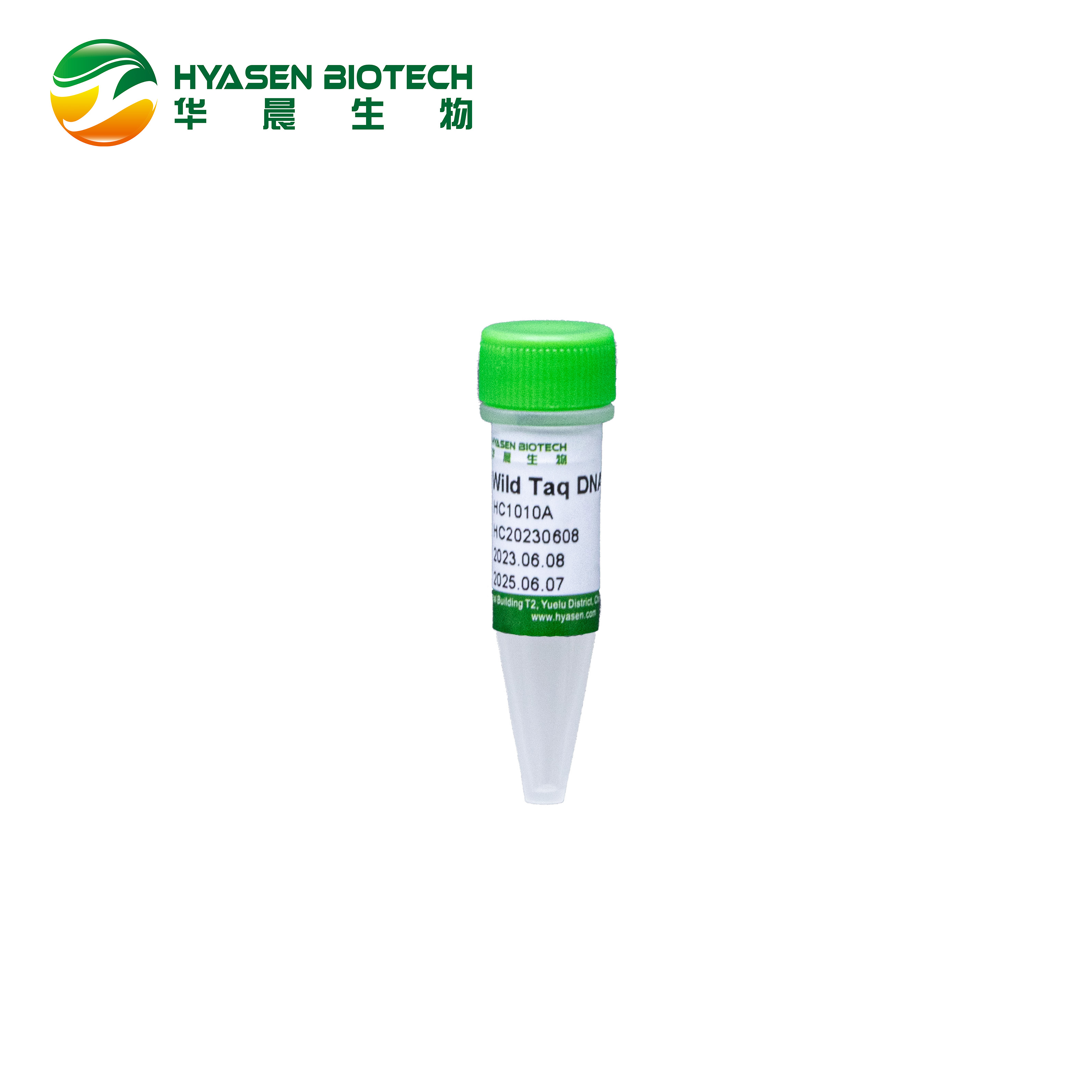
Taq DNA Polymerase
Taq DNA Polymerase is a thermostable DNA polymerase from Thermus aquaticus YT-1, that possesses a 5′→3′ polymerase activity and a 5´ flap endonuclease activity.
Components
|
Component |
0.5KU |
5KU |
25KU |
250KU |
|
10×Taq Buffer |
2×1mL |
2×10 mL |
2×50 mL |
5×200 mL |
|
Taq DNA Polymerase(5 U/μL) |
0. 1mL |
1 mL |
5 mL |
5×10 mL |
Storage Condition
Transported under 0°C and be stored at -25°C~-15°C.
Unit Definition
One unit is defined as the amount of enzyme that incorporate 15 nmol of dNTP into acid insoluble material in 30 minutes at 75°C.
Quality Control
1.Protein Purity Assay (SDS-PAGE): The purity of Taq DNA polymerase was ≥95% determined by SDS-PAGE analysis.
2.Endonuclease Activity: A minimum of 5 U of Taq DNA polymerase with 1 μg λDNA for 16 hours at 37 ℃ results in no detectable degradation as determined.
3.Exonuclease Activity: A minimum of 5 U of Taq DNA polymerase with 1 μg λ -Hind Ⅲ digest DNA for 16 hours at 37 ℃ results in no detectable degradation as determined.
4.Nickase Activity: A minimum of 5 U of Taq DNA polymerase with 1 μg pBR322 DNA for 16 hours at 37°C results in no detectable degradation as determined.
5.RNase Activity: A minimum of 5 U of Taq DNA polymerase with 1.6 μg MS2 RNA for 16 hours at 37°C results in no detectable degradation as determined.
6.E. coli DNA: 5 U of Taq DNA polymerase is screened for the presence of E. coli genomic DNA using TaqMan qPCR with primers specific for the E. coli 16S rRNA locus. The E. coli genomic DNA contamination is ≤1 Copy.
7.PCR Amplification (5.0 kb Lambda DNA) - A 50 µL reaction containing 5 ng Lambda DNA with 5 units of Taq DNA Polymerase for 25 cycles of PCR amplification results in the expected 5.0 kb product.
Reaction Setup
|
Components |
Volume |
|
Template DNA a |
optional |
|
10 μM Forward Primer |
1 μL |
|
10 μM Reverse Primer |
1 μL |
|
dNTP Mix (10mM each) |
1 μL |
|
10×Taq Buffer |
5 μL |
|
Taq DNA Polymerase b |
0.25 μL |
|
Nuclease-free water |
Up to 50 μL |
Notes:
1) The optimal reaction concentration of different templates is different. The following table shows the recommended template usage of 50 µL reaction system.
|
DNA |
Amount |
|
Genomic |
1 ng-1 μg |
|
Plasmid or Viral |
1 pg-1 ng |
2) The optimal concentration of Taq DNA Polymerase may range from 0.25 µL~1 µL in specialized applications.
Reaction Program
|
Step |
Temperature (°C) |
Time |
Cycles |
|
Initial denaturation a |
95 ℃ |
5mins |
- |
|
Denaturation |
95 ℃ |
15-30 s |
30-35 Cycles |
|
Annealing b |
60 ℃ |
15 s |
|
|
Extension |
72 ℃ |
1kb/min |
|
|
Final Extension |
72 ℃ |
5mins |
- |
Notes:
1) The initial denaturation condition is suitable for most amplification reactions and can be modified according to the complexity of template structure. If the template structure is complex, the initial denaturation time can be extended to 5 – 10mins to improve the initial denaturation effect.
2) The annealing temperature needs to be adjusted according to the Tm value of the primer, which is generally set to 3~5 ℃ lower than the Tm value of the primer; For complex templates, it is necessary to adjust annealing temperature and extend extension time to achieve efficient amplification.






